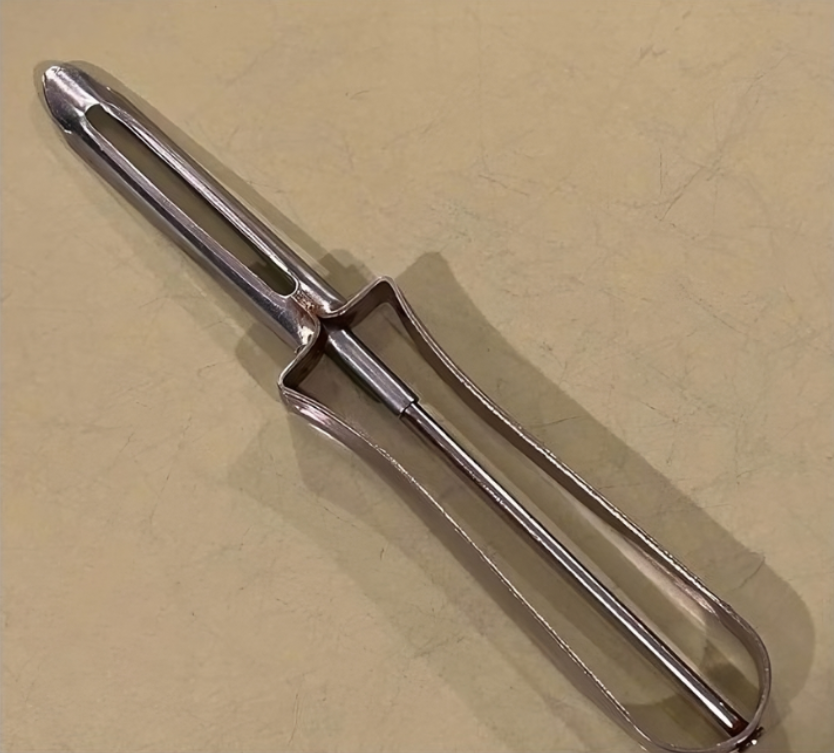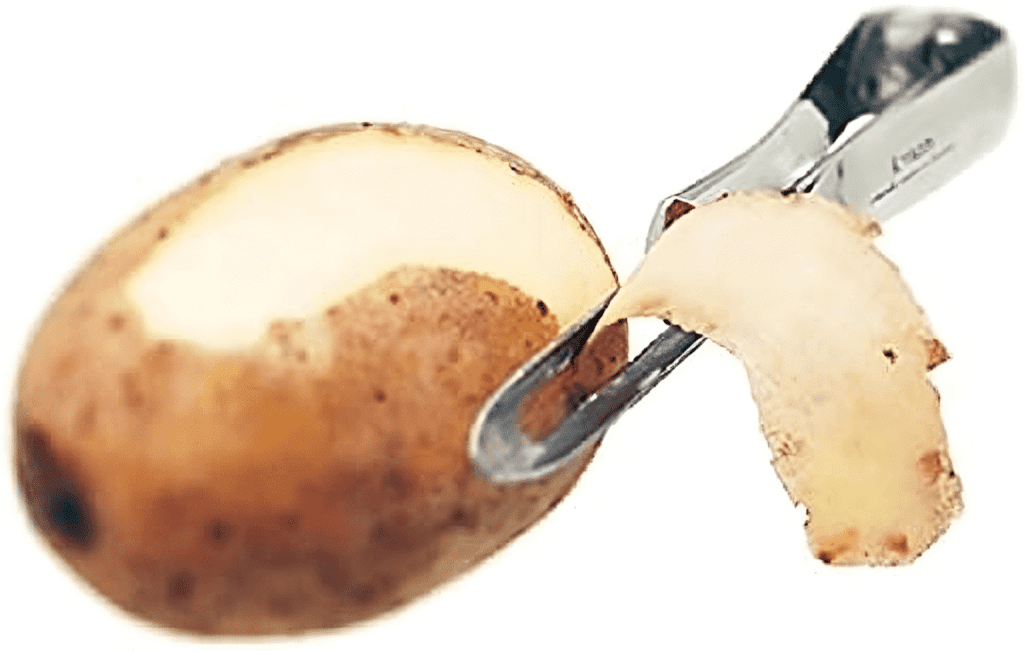There’s one kitchen tool that has withstood the test of time, remaining a staple in kitchens worldwide for over half a century: the classic vegetable peeler. Often overlooked, this simple yet effective tool continues to make food preparation easier, quicker, and more efficient. Whether it’s peeling apples, carrots, or potatoes, the peeler is a versatile instrument that proves its worth in every kitchen, old or new. So, what makes this humble tool so enduring?
The Essential Role of a Vegetable Peeler

Peelers are more than just a kitchen convenience—they’re a necessity for anyone who spends time cooking. By removing the tough, inedible skins from fruits and vegetables, peelers make produce easier to eat and more appealing in dishes. But peelers also do so much more: they can slice ribbons for salads, create garnishes, and even help make vegetable noodles.
With various designs tailored for specific tasks, peelers have evolved from simple tools to multi-functional kitchen companions. Despite newer designs and innovations, many people still rely on their tried-and-true peeler, which may be decades old but still functions perfectly.
Types of Vegetable Peelers: An Overview
Over the years, different styles of peelers have been developed to cater to various preferences and needs. Here are the primary types:
1. Straight Peelers
The straight peeler, also known as the Lancashire or Econome peeler, features a blade parallel to the handle, much like a knife. This design allows for precise control, especially when working with oddly shaped produce. The classic French Econome peeler, invented in 1928, introduced a unique design featuring two blade slits, allowing for more effective peeling. While straight peelers are durable and easy to use, they require a bit more wrist control.
2. Swivel Peelers
Swivel peelers have blades that pivot to accommodate the contours of the vegetable being peeled. The swiveling mechanism helps the blade adjust automatically, making peeling smoother and easier. The Jonas peeler, a Swedish design introduced in 1953, popularized this style. The swivel peeler’s versatility and efficiency have made it the go-to peeler in many households, and it remains the standard in the United States.
3. Y Peelers
The Y peeler, sometimes called a speed peeler, resembles a razor, with a blade perpendicular to its handle. The Y design allows users to “shave” the peel from the vegetable in a back-and-forth motion, which is particularly useful for long, smooth vegetables like cucumbers and carrots. One of the most famous Y peelers is the Zena Rex, invented in 1947 in Switzerland. Its aluminum body and efficient blade design have cemented it as an icon of Swiss ingenuity and design.

A Peeler for Every Kitchen Task
While traditional peelers are used for everyday peeling, there are specialized versions that cater to different needs:
1. Curved Blade Peelers
Curved blade peelers closely follow the shape of rounded vegetables and fruits. These peelers make quicker work of tasks like peeling potatoes, as they remove larger sections of skin in fewer passes.
2. Mechanical Peelers
Crank-operated apple peelers make quick work of peeling and can core and slice in one smooth motion. These peelers, often called apple corers, are ideal for anyone who processes large quantities of apples, whether for baking pies or making applesauce. Variations of the crank peeler, such as the CrankMaster, are designed to be easy on the hands and are suitable for individuals with arthritis or limited hand strength.
Why Your Old Peeler Is Probably Still the Best
For many, the appeal of an old peeler lies in its familiarity and reliability. These classic tools, whether Y peelers or straight peelers, are built to last, with simple designs that get the job done without fuss. Many old peelers were made from durable materials like stainless steel or aluminum, which hold up well over time.
Peelers often hold a nostalgic place in our kitchens. They are tools handed down through generations, trusted for family recipes, and essential for holiday meal preparations. Unlike many modern gadgets, which can be finicky or fragile, a classic peeler endures, proving that sometimes, the simplest tools are the most effective.
Peeling Techniques: Tips for Getting the Best Results

To make the most out of your peeler, here are some techniques and tips to improve your peeling experience:
1. Use Hot Water for Better Cuts
If you’re using a straight peeler, try dipping the blade in hot water before cutting. This softens the peel, making it easier to remove thin slices. It’s a trick that can make even an old peeler feel like new.
2. Peel Away from Yourself for Safety
When using a straight or swivel peeler, always peel away from your body. This method prevents slips and reduces the risk of cutting yourself. It also gives you better control over the peeler and helps remove the skin in more even layers.
3. Use Quick, Light Strokes
For vegetables with delicate skins, like zucchini or cucumber, use light strokes. Pressing too hard can remove too much of the vegetable, reducing its overall yield. Gentle strokes keep the peel thin and reduce food waste.
The Sustainable Choice: Reducing Waste with Peelers
One of the most compelling reasons to invest in a quality peeler is that it helps reduce food waste. Peeling vegetables and fruits more precisely ensures that you retain the edible portions, and in some cases, peelers can help you turn scraps into compostable waste.
Choosing a durable peeler over disposable or cheaply made options also promotes sustainability. Many vintage peelers are made from materials like stainless steel or aluminum that resist rust and wear, lasting decades when properly cared for. By using a peeler that lasts, you’re contributing to a less wasteful, more sustainable kitchen.
Why Every Kitchen Needs a Peeler
The peeler’s continued presence in our kitchens is a testament to its utility. Whether you’re making soup, preparing a salad, or baking an apple pie, a peeler makes prep work faster, more efficient, and more enjoyable. Beyond its basic function, a peeler allows home cooks to experiment with new dishes, from zucchini noodles to decorative vegetable garnishes.
The next time you reach for your peeler, remember: you’re holding a tool that has likely been a part of kitchens around the world for over 50 years. It’s a piece of history that brings together function, form, and a bit of nostalgia, proving that even the simplest tools can make a big impact.
Conclusion: Embrace the Timeless Peeler
In a world of ever-evolving kitchen gadgets, the classic vegetable peeler stands strong. From its humble beginnings to the numerous innovations it has inspired, the peeler remains an invaluable tool in any kitchen. So, if you have an old peeler tucked away in a drawer, hold onto it. It’s a testament to timeless design and a reliable companion in the art of cooking. For peeling, slicing, and prepping, there’s no better tool—50 years old and still working great.


